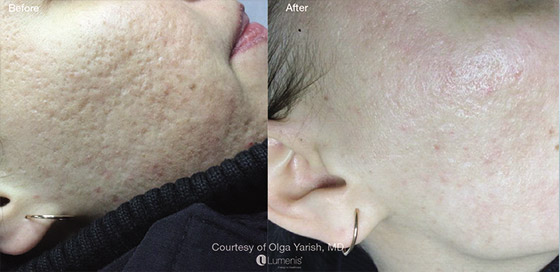Acne
Acne is a complex chronic inflammatory skin condition with inflammatory, non-inflammatory and resolving stages. Inflammatory lesions include papules, pustules and cysts, whilst non inflamed lesions include comedomes, hyperpigmented macules and various scars. There are multiple contributory factors to the development of acne, including familial tendency, androgenic hormones, Cuti bacterium overgrowth, Polycystic ovarian syndrome, occlusive cosmetics and a diet with high GI foods. This condition can have a profound and lasting biopsychosocial impact on the affected individual.
All of these factors need to be considered when assessing patient’s suitability for therapeutic options. In the first instance, we aim to minimise contributory factors before considering the addition of therapies. For example, a complex occlusive skin regime is replaced with a noncomedogenic regime before we consider adding topical keratolytic and retinoids. A range of oral agents are also available and are the next steps to treat the active phases of acne, leading up to oral isotretinoin. It is important to treat the condition appropriately to avoid the long-term sequelae associated with this condition, not just the physical post inflammatory hyperpigmentation and scarring (box-car, rolling and ice pick scars), but also the psychological and social impacts on the individual.
Epidermal and dermal melanosis may be treated with tailored topical therapies on prescription or intense pulse light (IPL), depending on patient lifestyle factors and budgetary considerations. Physical scars may be treated with chemical peels, dermabrasion for mild lesions, Laser resurfacing for a more complete treatment and TCA cross, subcisions and punch excisions in select cases not amenable to the previously mentioned modalities.
As can be seen, there are a lot of therapeutic options available to patients and a careful history, examination and selection is required to ensure optimal results. This is a complex chronic problem requiring multiple visits and treatments and the patient’s expectations of outcomes and time frames need to be realistic.
Before and after multiple sessions







